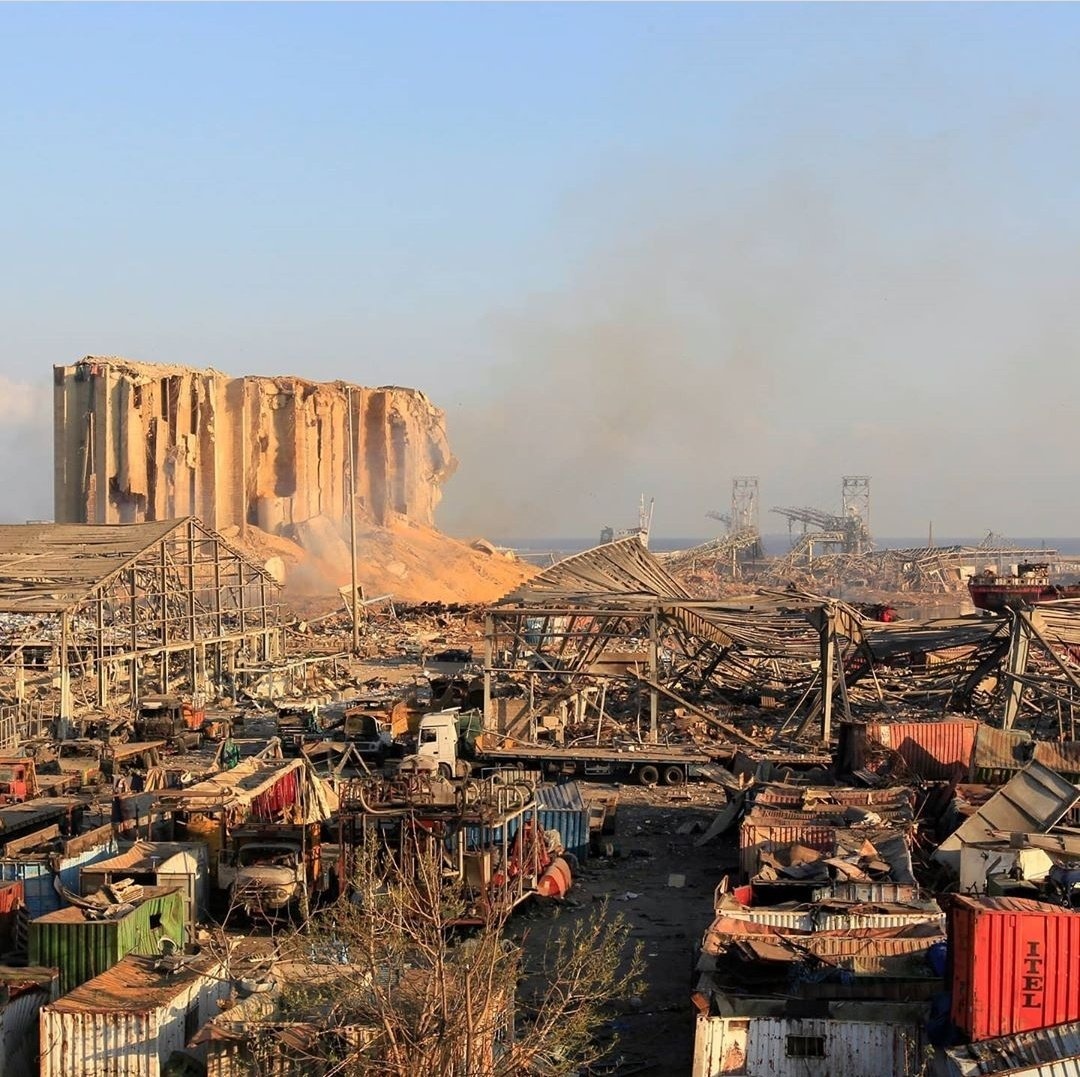7 August, 2020A catastrophic explosion in Beirut, 4 August 2020, was believed to be caused by ammonium nitrate. The death toll exceeds 135 and may climb as more victims are found and severely injured people succumb to their wounds.
What is ammonium nitrate, and why did it explode? IndustriALL Global Union’s health and safety expert, Brian Kohler, answers the important questions.
What is ammonium nitrate?
Ammonium nitrate is a well-known hazardous material, and has been involved in many disastrous explosions in the past. It is an inorganic chemical used as a nitrogen-rich fertilizer, and also (unsurprisingly) in the manufacture of explosives.
Why was it being stored at the port of Beirut?
The full story of what triggered this explosion may never be known. However, six years ago, an ageing cargo ship carrying some 2,750 tonnes of ammonium nitrate made a stop in Lebanon. Debt-ridden and found to be unseaworthy, the ship was impounded and the dangerous cargo confiscated.
Rather than resolving the issue or disposing of the seized goods safely, the dangerous ammonium nitrate was stored in a warehouse by the port of Beirut for the past six years. Repeated requests from officials for authorization to dispose or sell the material were apparently unanswered.
Why did it explode?
Normally, ammonium nitrate can be handled safely. It can, of course, be deliberately detonated when used as an explosive. However, under certain conditions, it can accidentally detonate with devastating force.
The ILO International Chemical Safety Card for ammonium nitrate can be found here. Explosive materials are usually regulated. Different jurisdictions have different regulations or guidance on the handling and storage of ammonium nitrate. Check for the applicable rules in your jurisdiction. Here, for example, is some guidance from the United Kingdom.
The conditions that make it more dangerous include the presence of impurities such as organic materials, other explosive substances, metals, and sulphur. However, long-term storage of large quantities is in itself dangerous because the material tends to absorb moisture and contaminants and solidify or “cake”.
Also, slow decomposition of the chemical, especially when stored in large quantities in a hot environment, can result in an increasing risk of the accumulation of decomposition products, self-heating (from the heat released by the slow decomposition reactions) and eventually sudden detonation when a critical self-decomposition temperature is reached.
Ammonium nitrate should be stored separately from other flammable and explosive materials and potential contaminants in well-designed fire-safe buildings. Stored quantities should be limited, as should storage duration. Any contaminated material (for example from broken bags) must be safely disposed of, immediately. Obviously, any sources of ignition, including smoking, must be strictly prohibited anywhere near this material.
It can be obvious that storing a large lot of ammonium nitrate for six years in a Lebanese warehouse makes all of these conditions more possible. Bags can become damaged, making the chance of contamination more likely. Self-heating can start, slowly at first, within the large pile. Hot weather can create extreme temperatures inside warehouses, particularly if people do not normally work in them.
Alternatively, if people are in the area frequently, long-term storage can make them complacent of the risk, and exposure to impacts or sources of ignition such as electric shock, or unauthorized smoking, may be more likely. We should also not rule out the possibility of malicious actors taking advantage of such a store of dangerous material without a thorough investigation.
What is the environmental impact of the explosion?
Whenever large amounts of any kind of building or infrastructure is vapourized, the air will be filled with unknown levels of whatever was used in their construction: heavy metals like lead; dangerous materials like asbestos; chemicals and combustion products of every sort; and of course dust, which will have a high percentage of silica.
This was observed following the destruction of the World Trade Centre in New York, bombings in Iraq, and the fire at Notre Dame in Paris, where lead was released from the vapourizing of the lead-sheathed spire. The products of the combustion of ammonium nitrate itself will be every conceivable combination of nitric and nitrous oxides, nitric acid, and so on. Some of these are toxic, but their presence will be short-lived.
What should happen now?
The accident needs to be properly, transparently and independently investigated to determine which, if any, of these conditions existed. Storing such a large quantity of ammonium nitrate for so long can be defined as an accident waiting to happen. Those found to be responsible should be held accountable, and systems put in place to prevent similar accidents happening in future.
We offer our sincere condolences to the victims and their families; along with the wish that such a disaster never be repeated.
Image: Mayof Elkezza on Twitter
